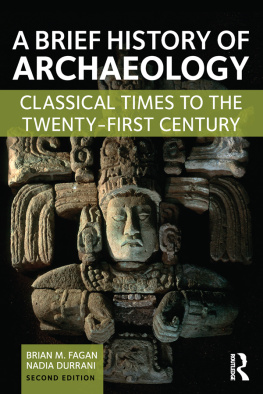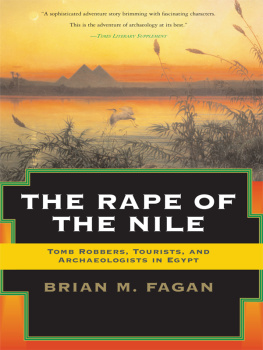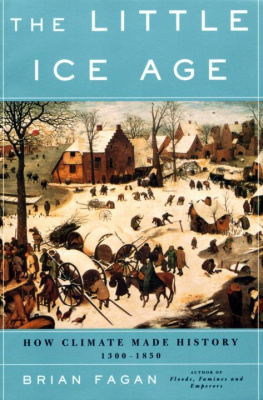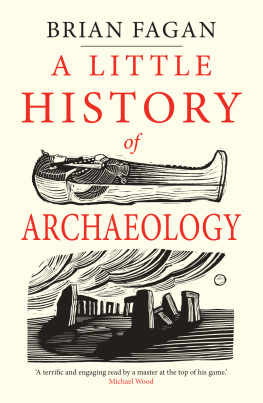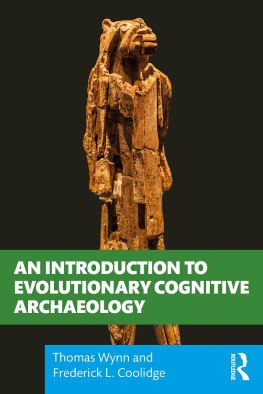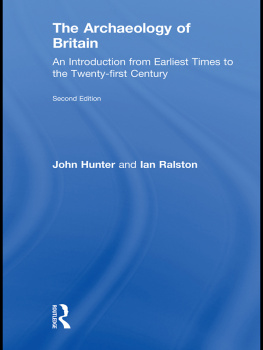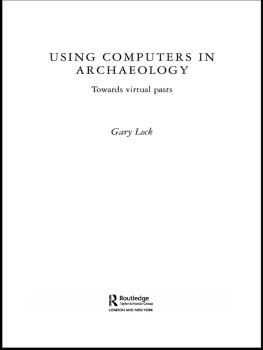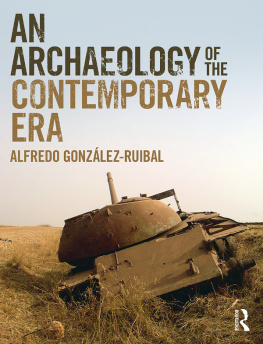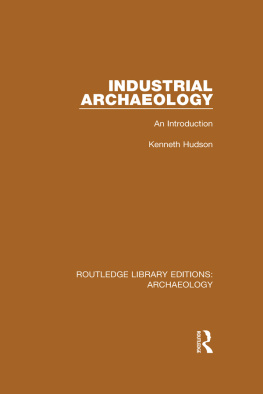In the Beginning
In the Beginning offers an expansive yet accessible explanation of what archaeologists do. The experience of finding and excavating sites is revealed, and we learn the strategies and skills archaeologists employ to recover and interpret evidence. The book places archaeological thinking and practices in contemporary social contexts, and provides compelling guidance to readers intrigued by the subject.
Peter Hiscock, University of Sydney, Australia
In the Beginning describes the basic methods and theoretical approaches of archaeology. This is a book about fundamental principles written in a clear, flowing style, with minimal use of technical jargon, which approaches archaeology from a global perspective.
Starting with a broad-based introduction to the field, this book surveys the highlights of archaeologys colorful history, then covers the basics of preservation, dating the past, and the context of archaeological finds. Descriptions of field surveys, including the latest remote-sensing methods, excavation, and artifact analysis, lead into the study of ancient environments, landscapes and settlement patterns, and the people of the past. Two chapters cover cultural resource management, public archaeology, and the important role of archaeology in contemporary society. There is also a chapter on archaeology as a potential career. In the Beginning takes the reader on an evenly balanced journey through todays archaeology. This well-illustrated account, with its numerous boxes and sidebars, is laced with interesting, and sometimes entertaining, examples of archaeological research from all parts of the world.
This classic textbook of archaeological method and theory has been in print for nearly 50 years and is used in many countries around the world. It is aimed at introductory students in archaeology and anthropology taking survey courses on archaeology, as well as more advanced readers.
Brian M. Fagan is one of the worlds leading writers about archaeology and an internationally recognized authority on world prehistory. He studied archaeology and anthropology at Pembroke College, Cambridge University, and then spent seven years in sub-Saharan Africa. Now a distinguished professor emeritus, from 1967 to 2013 he was a professor of anthropology at the University of California, Santa Barbara. Brian has written seven bestselling textbooks and numerous general books on archaeology, ancient climate change, and other topics.
Nadia Durrani has contributed to a wide range of archaeological publications and is the former editor of Britains two bestselling archaeological magazines, Current Archaeology and Current World Archaeology. Over the years, she has authored and edited countless articles and books, including co-authoring a portfolio of books with Brian. Her background is in Arabian archaeology, and following a degree in archaeology and anthropology from Cambridge University, she took a PhD in southwest Arabian archaeology from University College London. Nadia remains actively involved in Arabian studies and is on the board of the International Association for the Study of Arabia. She is also a founding member of the Great War Archaeology Group and a fellow of the Society of Antiquaries.

Source: Courtesy of National Geographic/Superstock.
In the Beginning
An Introduction to Archaeology
Fourteenth edition
Brian M. Fagan and Nadia Durrani

Fourteenth edition published 2020
by Routledge
52 Vanderbilt Avenue, New York, NY 10017
and by Routledge
2 Park Square, Milton Park, Abingdon, Oxon, OX14 4RN
Routledge is an imprint of the Taylor & Francis Group, an informa business
2020 Taylor & Francis
The right of Brian M. Fagan and Nadia Durrani to be identified as authors of this work has been asserted by them in accordance with sections 77 and 78 of the Copyright, Designs and Patents Act 1988.
All rights reserved. No part of this book may be reprinted or reproduced or utilised in any form or by any electronic, mechanical, or other means, now known or hereafter invented, including photocopying and recording, or in any information storage or retrieval system, without permission in writing from the publishers.
Trademark notice: Product or corporate names may be trademarks or registered trademarks, and are used only for identification and explanation without intent to infringe.
First edition published by Little, Brown and Co. 1972
Thirteenth edition published by Pearson Education, Inc. 2014
Library of Congress Cataloging-in-Publication Data
Names: Fagan, Brian M., author. | Durrani, Nadia, author.
Title: In the beginning : an introduction to archaeology / Brian M. Fagan and Nadia Durrani.
Description: Fourteenth edition. | Abingdon, Oxon ; New York, NY : Routledge, 2020. | Includes bibliographical references and index.
Identifiers: LCCN 2019015164 (print) | LCCN 2019018658 (ebook) | ISBN 9781315193304 (eBook) | ISBN 9781351757683 (Adobe Reader) | ISBN 9781351757669 (Mobipocket Unencrypted) | ISBN 9781351757676 (ePub3) | ISBN 9781138722941 (hardback : alk. paper) | ISBN 9781138722934 (pbk. : alk. paper)
Subjects: LCSH: ArchaeologyMethodology. | ArchaeologyHistory.
Classification: LCC CC75 (ebook) | LCC CC75 .F34 2020 (print) | DDC 930.1028dc23
LC record available at https://lccn.loc.gov/2019015164
ISBN: 9781138722941 (hbk)
ISBN: 9781138722934 (pbk)
ISBN: 9781315193304 (ebk)
Typeset in Adobe Caslon Pro
by Apex CoVantage, LLC
Visit the eresource at www.routledge.com/9781138722934
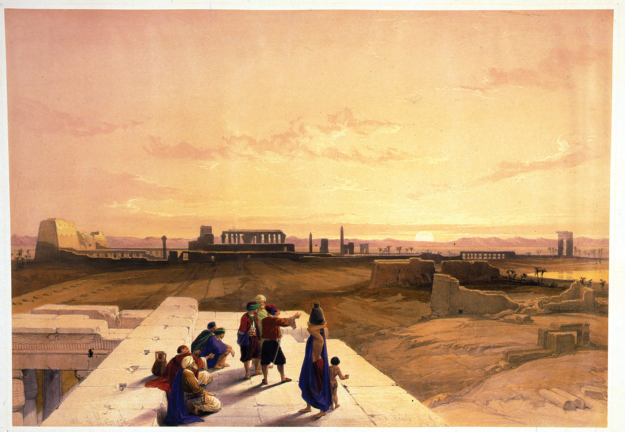
Figure 0.2 The Temple of Amun at Luxor, Egypt. View painted by David Roberts (17961864).
Source: Courtesy of Art Collection 2/Alamy Stock Photo.
To
Milton Johnson, who believed in this book and started it all those years ago. Thank you!
The whole earth is the sepulcher of famous men; and their story is not graven only on stone over their native earth, but lives far away, without visible symbol, woven into the stuff of other mens lives. For you now it remains to rival what they have done.
Thucydides, The Funeral Oration of Pericles
Contents
Guide
Brief Contents
Looming pyramids, mysterious lost civilizations, royal tombs laden with gold: The romance of archaeology never ceases to fascinate and amaze. The stereotype of the archaeologist as adventurer and swashbuckler originated in the nineteenth century, when both archaeologists and the ancient civilizations they uncovered were the stuff of adventure in remote lands. Today, more than 150 years of archaeological investigations have turned archaeology into a meticulous science with roots in both history and a wide variety of scientific disciplines. But the excitement is still there, in the many diverse and highly detailed reconstructions of life in the past that come from scientific inquiry. Archaeologists have reconstructed the lifeways of the earliest humans, documented some of the earliest art in the world, outlined the processes of plant domestication, and even examined the garbage produced in modern urban America. In this book, we describe how archaeologists make and study such finds to illuminate the human past.


